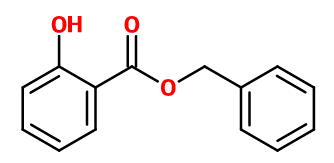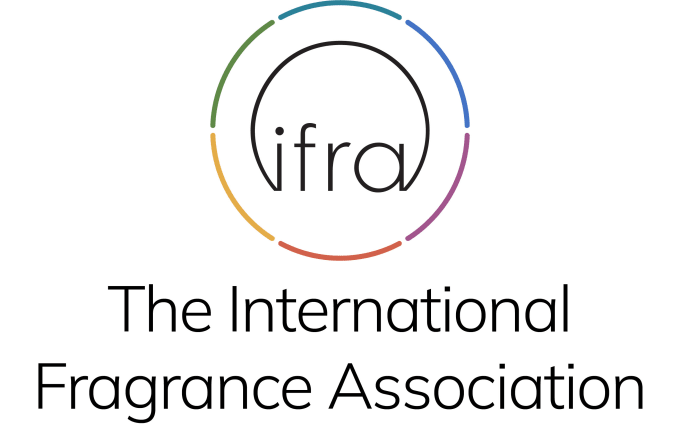
Photo credits: ScenTree SAS
| Company | Ingredient Name | ID | Comments | Naturality | Certifications | Purity | Latin name | Treated part | Geographical origin | MOQ |
|---|---|---|---|---|---|---|---|---|---|---|
|
|
Salicylate de Benzyle - 30 Gr | - |
Visit website
|
- | - | - | - | - | - |
General Presentation
-
CAS N° : 118-58-1
-
EINECS number : 204-262-9
-
FEMA number : 2151
-
FLAVIS number : 09.752
-
JECFA number : 904
-
Appearance : Colorless viscous liquid
-
Density : 1,179
-
Volatility : Head/Heart
-
Price Range : €
Physico-chemical properties
-
Molecular formula : C14H12O3
-
Molecular Weight : 228,24 g/mol
-
Log P : 4
-
Fusion Point : 24°C
-
Boiling Point : 335°C
-
Detection Threshold : Donnée indisponible.
-
Optical rotation : Donnée indisponible
-
Vapor pressure : Donnée indisponible
-
Refractive Index @20°C : Donnée indisponible
-
Acid Value : Donnée indisponible.
-
Flash Point : 180°C
Uses
Uses in perfumery :
Benzyl Salicylate is used in floral notes, for a slightly marine and iodized nuance. Helps to stabilize fragrances and to absorb UV rays. Used to perfume sunscreens.
Year of discovery :
1908
Natural availability :
Benzyl Salicylate is found in Ylang-Ylang Extra EO (and other ylang fractions), which makes it easy to obtain it in its natural state by fractional distillation. However, synthetic Benzyl Salicylate remains the most used in perfumery.
Isomerism :
Benzyl Salicylate does not have any isomer used in perfumery.
Synthesis precursor :
Benzyl Salicylate is not a precursor to the synthesis of another compound of olfactory interest.
Synthesis route :
Benzyl Salicylate, like other Salicylates, is synthesized by an esterification reaction between salicylic acid and Benzyl Alcohol. This reaction is catalysed by the presence of concentrated sulfuric acid in the reaction medium.
Regulations & IFRA
Allergens :
This ingredient does not contain any allergen.
IFRA 51th :
This ingredient is restricted by the 51th amendment
- Quantitative limit on the use :
-
Cat.1 Cat.2 Cat.3 Cat.4 Cat.5A B C DCat.6 1,3 % 0,39 % 7,8 % 7,3 % 1,9 % 1,9 % 1,9 % 1,9 %4,3 % Cat.5A B C DCat.6 1,9 % 1,9 % 1,9 % 1,9 %4,3 % Cat.7A BCat.8 Cat.9 Cat.10A BCat.11A BCat.12 15 % 15 %0,77 % 14 % 51 % 51 %28 % 28 %No Restriction Cat.10A BCat.11A BCat.12 51 % 51 %28 % 28 %No Restriction
Annexe I :
Some regulated synthetic ingredients are found in nature and in certain proportions in natural ingredients. This presence in nature has to be taken into account when calculating limits of use recommended by the IFRA. In case you do not know these concentrations, you can use the ones estimated by the IFRA. Here they are :
| List of regulated compounds contained in this ingredient | |||
|---|---|---|---|
| Ingredient Name | Botanical Name | CAS N° | Estimated Concentration |
| Cananga oil | Cananga odorata (Lam.) Hook. f. & Thomson (forma macrophylla Steenis) | 68606-83-7 | 0,4 |
| Cassie absolute | Vachellia farnesiana (L.) Willd. | 8023-82-3 | 0,03 |
| Jasmine absolute | Jasmium grandifloum L. | 8022-96-6 | 0,17 |
| Jasmine concrete | Jasminum grandiflorum L. | 8022-96-6 | 0,17 |
| Mimosa absolute | Acacia decurrens (Wendl.f.) Willd. | 8031-03-6 | 0,02 |
| Carnation absolute | Dianthus caryophyllus L. | 8021-43-0 | 7 |
| Tuberose absolute | Poliantes tuberosa L. | 8024-05-3 | 3,6 |
| Tuberose concrete | Poliantes tuberosa L. | 8024-05-3 | 2,1 |
| Ylang ylang oil I | Cananga odorata (Lam.) Hook. f. &Thomson oil (forma genuine Steenis) | 8006-81-3 | 2,58 |
| Ylang ylang oil II | Cananga odorata (Lam.) Hook. f. &Thomson oil (forma genuine Steenis) | 8006-81-3 | 2,36 |
| Ylang ylang oil III | Cananga odorata (Lam.) Hook. f. &Thomson oil (forma genuine Steenis) | 8006-81-3 | 2,48 |
| Ylang, Ylang oil complete | Cananga odorata (Lam.) Hook. f. &Thomson oil (forma genuine Steenis) | 8006-81-3 | 3,11 |
| Ylang, Ylang oil extra | Cananga odorata (Lam.) Hook. f. &Thomson oil (forma genuine Steenis) | 8006-81-3 | 3,35 |
| Clove bud absolute | Syzygium aromaticum (L.) Merr. & L.M.Perry | 616-772-2 | 0,04 |
| Hyacinth absolute | Hyacinthus orientalis L. | 8023-94-7 | 0,2 |
| Jasmine officinale absolute | Jasminum officinale L. | 8024-43-9 | 0,2 |
| Jasmine sambac absolute | Jasminum sambac (L.) Aiton | 103798-23-6 | 0,2 |
| Jasmine sambac CO2 extract | Jasminum sambac | 103798-23-6 | 0,15 |
| Ylang-ylang absolute | Cananga odorata (Lam.) Hook.f.&Thomson forma genuina | 3,5 | |



